
I’ve been a diehard Gary Bunt fan ever since stumbling upon his wonderful paintings of English rural and village life over a year ago. His work is easy to recognize and even easier to love. Just look for the old man and his faithful dog. These constant companions really know how to tug at your heartstrings.
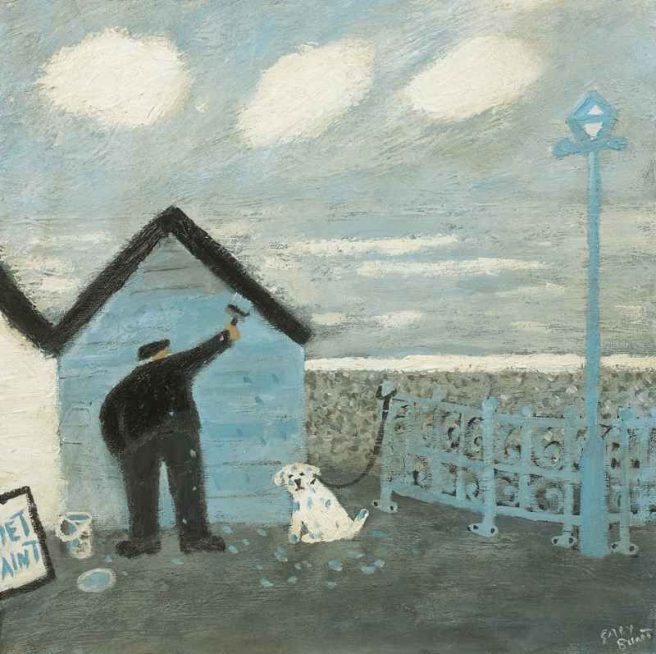


Once you’ve seen “Bert” and his dog in a few different scenes — sitting side by side atop a hill, strolling through the woods, or cozied up in their country kitchen — you can’t help but feel an instant connection.

There’s a certain sense of comfort and reassurance seeing them digging in the garden, feeding ducks just outside the barn, watching sheep in the meadow, bicycling down the lane, or watching the snow fall.

Bunt is wildly popular and beloved in the UK and all over the world; perhaps his wide appeal has to do with his ability to make ordinary life feel magical, even sacred. His unpretentious style makes his work infinitely accessible as it brims with quintessential British charm.
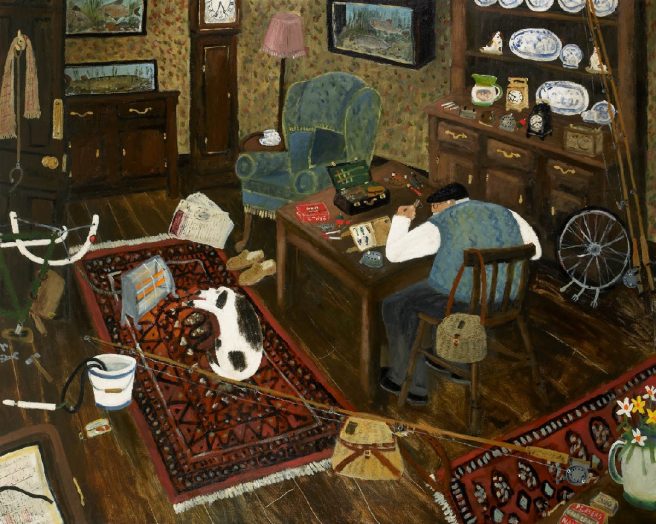

Born in East Peckham, Kent, Bunt (a self taught artist) has been painting for as long as he can remember, and since his school days, has also been keen on poetry, literature, and music. In his teens he taught himself to play the guitar, joined several bands, and wrote songs.
Being from a working class family, higher education was not a consideration, so Bunt worked as a builder (his dad was also in construction) to support his career as a professional guitarist.



His passion for painting intensified in his twenties, but it was only after shedding a destructive lifestyle of recreational drugs and alcohol addiction, and then remarrying, did he begin to pursue art full time.
When he met his second wife, Lynn, Bunt had an epiphany of sorts, renewed his faith in Christ, found peace, and finally decided to become the poet and painter he’d daydreamed about since childhood.
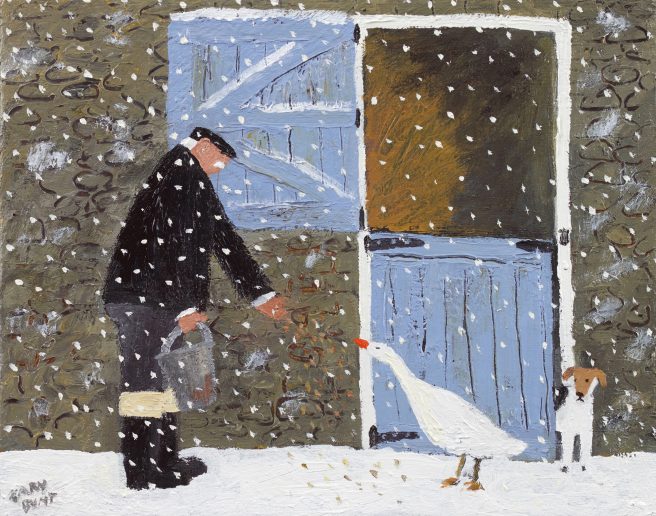
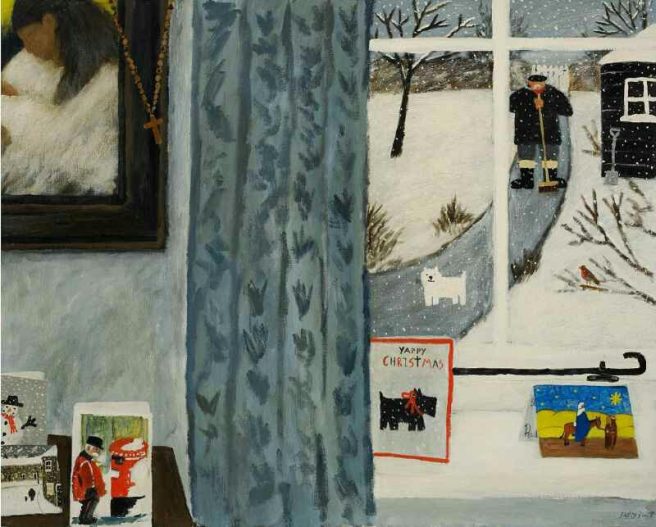

His primary artistic influences are modern British painters such as Christopher Wood, Cedric Morris, Ben and Winifred Nicholson, Eric Ravilious, and Stanley Spencer. He works with oils, and likes building surface textures on canvas with thick paints and glazes.

Bunt is inspired by the country life he’s always known and loved, childhood memories, family members and other characters he’s met and observed in the villages he frequents.
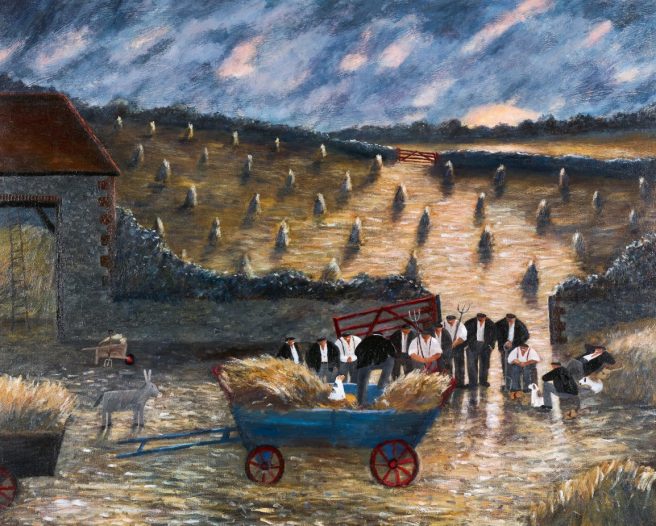
His faith also plays a large role in his art, and his unique treatment of religious subjects is another reason his pictures captivate and resonate. He’s not one for formal organized religion, preferring instead to live according to Christ’s teachings on his own terms. He hopes to make religion more approachable through his art, so others may rediscover or renew their faith in a more personal way.
So we see Jesus in a modern context, playing fetch with a dog, practicing his carpenter skills, or sitting with a fisherman in a little boat. One does not have to sit in a church to commune with God. All is not fire, brimstone and eternal damnation. Christ is present in everyday life as a gentle friend to guide, comfort, and uplift.

Each of Bunt’s paintings comes with a short, witty verse on the back, told from the dog’s point of view. These evolved after Bunt’s bout with vocal cord cancer. While seriously ill, he spent a lot of time reflecting and reading Gospel. When he was finally strong enough to return to his easel, he added little poems to his paintings, at first addressed to loved ones. Now they’ve become part of his trademark, and he views poem and painting as one work of art. Collectors enjoy his cheeky humor and wry observations on life.
The Kitchen Sink I was burying my bone in the garden I ended up with muddy paws My master was not very happy He shouted get indoors He grabbed me without warning I didn't have time to think Before I knew what was going on He was scrubbing me in the sink *
He believes cancer was God’s will rather than a punishment. Before falling ill, he was painting impressionistic landscapes. After recovering, his style changed to the naïve rural whimsy he’s now known for, which has led to notable commercial success.

To Wee or Not to Wee My master's getting rather cross He keeps telling me to go It's alright for him His blooming' thing Doesn't dangle in the snow *

A Turkey and a Bone Piggies in a blanket A turkey and a bone We've just been to the butcher's shop And now we're heading home. *
What about the old man? Bunt admits it’s actually him; he wanted to paint an older version of himself doing various things because he didn’t think he’d survive till old age. His close brush with death taught him that tomorrow is never a given. His obsessions are God, Christ, and painting. The spiritual and artistic aspects of his life are so intertwined that it wouldn’t be far fetched to say that for him, painting is a form of prayer and meditation, where he channels the ideas God has for him.


Although the old man represents Bunt’s personal “contemplative journey,” he’s painted him in an ambiguous way — often pictured from the back or with his face hidden — so that he can also be an “everyman” viewers can identify with — one’s own father, grandfather, brother, uncle.
And the dog? Though there are different dogs — some white, some golden, some black and white, some a little larger than others — they’re all based on his own pets or the relationships friends have with theirs. Man and dog are always together, and these pictures of joyful companionship, loyalty, and devotion are essentially life affirming.


For all its seeming simplicity, Bunt’s work has the ability to move us on a deep level, perhaps because his art is informed by Bunt’s own struggles, abiding faith, and tendency to prioritize heart and emotion. I love escaping to his rolling hills, fishing towns, farms, fields, gardens and woods, where the pace is slower, simple pleasures abound and work is its own reward. He gives us peace, quiet, contentment — too often lacking in the frenetic pace of modern living.
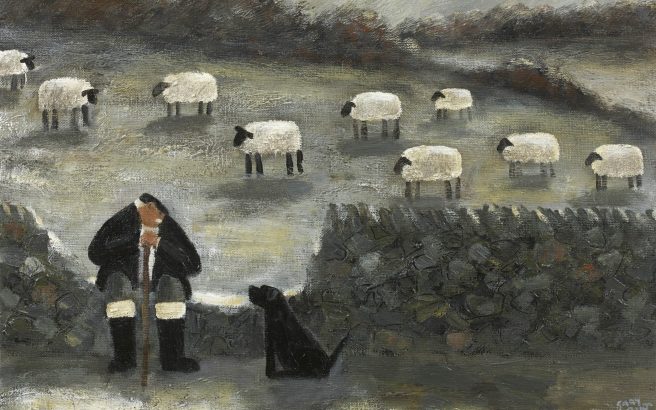

The Lily Pond I am here with my master down by the pond He's feeding the fish some bread I think he's forgot it's gone 4 o'clock And I would like to be fed *
Gary Bunt has been represented by the Portland Gallery in London since 2008. Their website has a wonderful archive of his work, which includes his poems alongside his paintings. All twelve of his solo exhibitions (most recent was Fall 2020) have sold out instantly. Prepare to be thoroughly charmed. 🙂
ETA (January 2023): For more, visit Gary Bunt’s Official Website and Instagram.
Enjoy this video of Gary discussing his work:
*
*Copyright © 2021 Jama Rattigan of Jama’s Alphabet Soup. All rights reserved.

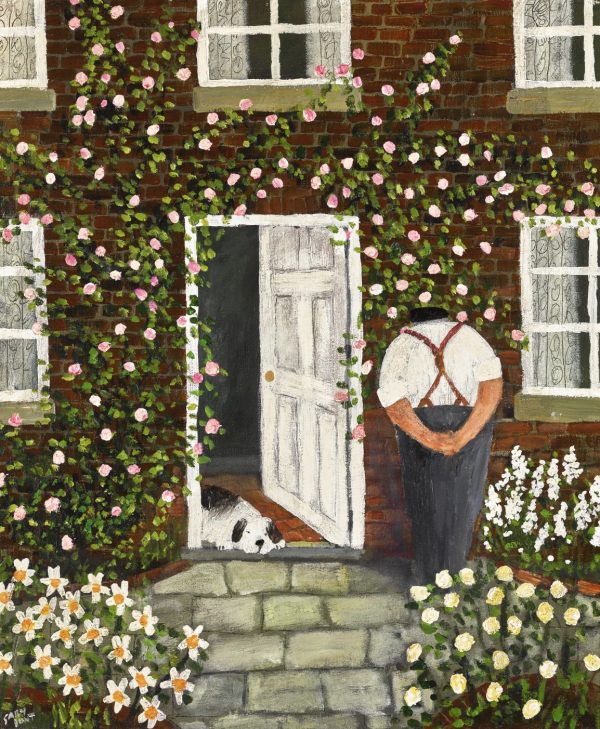
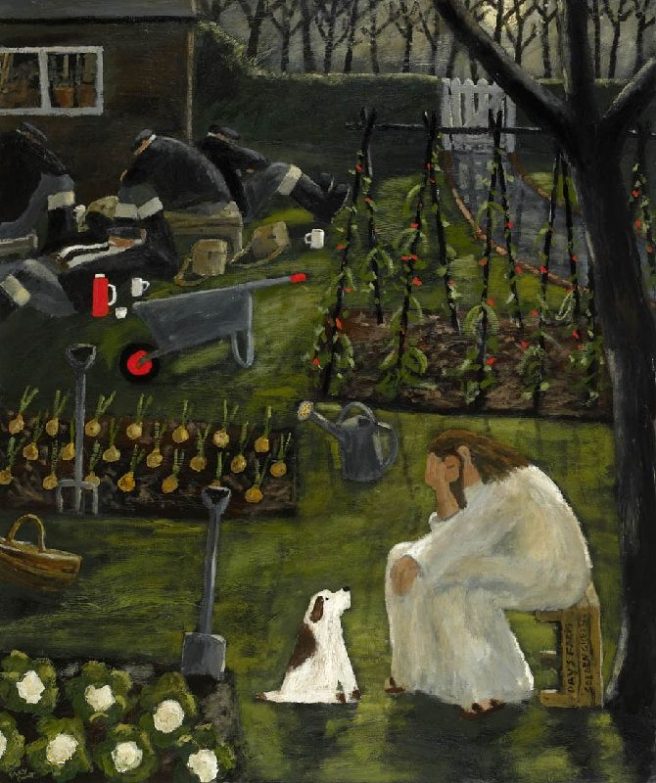








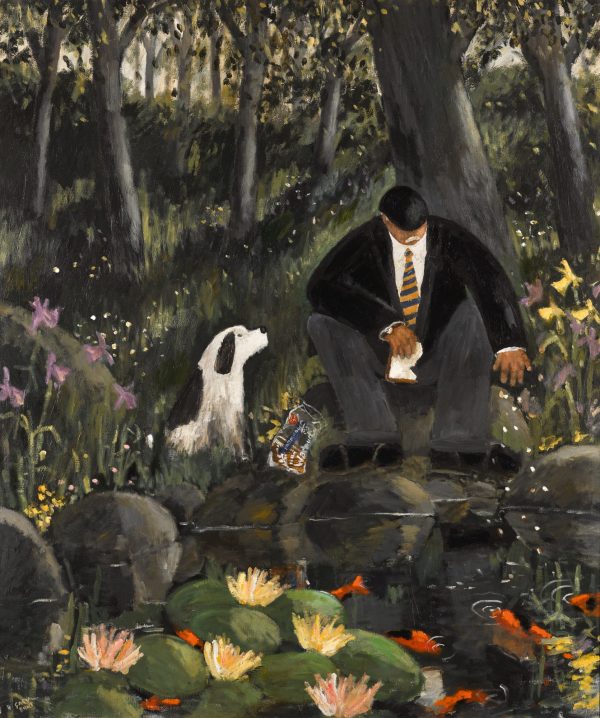
🖤
LikeLiked by 1 person
I love his drawings, but especially his poems!! Very insightful gentleman! Thank you, Jama!
LikeLiked by 1 person
I love that he includes poems on the back of his paintings. Wonder if there are any other artists who do that.
LikeLike
Love these works, thank you so much for sharing with us!
LikeLiked by 1 person
Glad you enjoyed the post, Dorothy. Gary’s paintings are so accessible and easy to love.
LikeLiked by 1 person
Love the couple dancing!
LikeLiked by 1 person
Thank you thank you thank you, Jama, for introducing me to the work of Gary Bunt! His paintings go straight to my heart, and his poems make me laugh. The video is perhaps the best of all. What a treat!
LikeLiked by 1 person
No surprise you would enjoy Gary’s work — I mean, all those dogs!!! 🙂
LikeLike
Beautiful soulful paintings. The landscapes, people and animals are all imbued with love. I’m not religious but I still can connect with them.
LikeLike
Soulful is such a great word to describe his paintings. Simple but so deep and resonant.
LikeLike
Oh my, I love everything about this! Thanks so much for sharing this, Jama. As a person of faith AND a dog lover (and poetry lover!), his art warms my heart! Thanks again for this gift today!
LikeLike
Glad to have checked all the right boxes for you today, Sylvia. Gary’s art is a gift to us all.
LikeLike
So inspiring! Gary’s story along with his beautiful artwork really moved to me to tears.
LikeLike
I was equally moved by his work, and glad you found his story inspiring.
LikeLike
Your post makes a loving ending to the day, Jama. Every part of what you shared of Gary Bunt’s life is an inspiration to take in the love of all the life we have. What special gifts he’s giving to everyone. Thank you!
LikeLike
I enjoyed learning more about Bunt’s work; I think the hardships he experienced in his life, his abiding faith and humility, as well as his total lack of pretense and ongoing gratitude for his artistic gifts translate into pictures that convey sincere, relatable emotions for the viewer.
LikeLiked by 1 person
Thanks for sharing this beautiful artwork! I love the dog and reading his “poems” made me laugh aloud. Now if there was only an artist who did the exact same thing for cats!!
LikeLike
Jama, the more I see Gary Bunt’s pictures, the more I want to see. Might I ask the sources (maybe books?) of all these beautiful pictures and text? I was hoping for a book but all that is available are out-of-prints. Much thanks.
LikeLike
I only know of that one book of his work by Alexandra Fielding (which seems to be a collector’s item these days). He doesn’t appear to have a website; his “home base” has been the Portland Gallery in London for years now (that is where I sourced the images for this post). He continues to give exhibitions in London and as I mentioned in my post, as soon as they are announced, his pieces sell out right away.
LikeLike